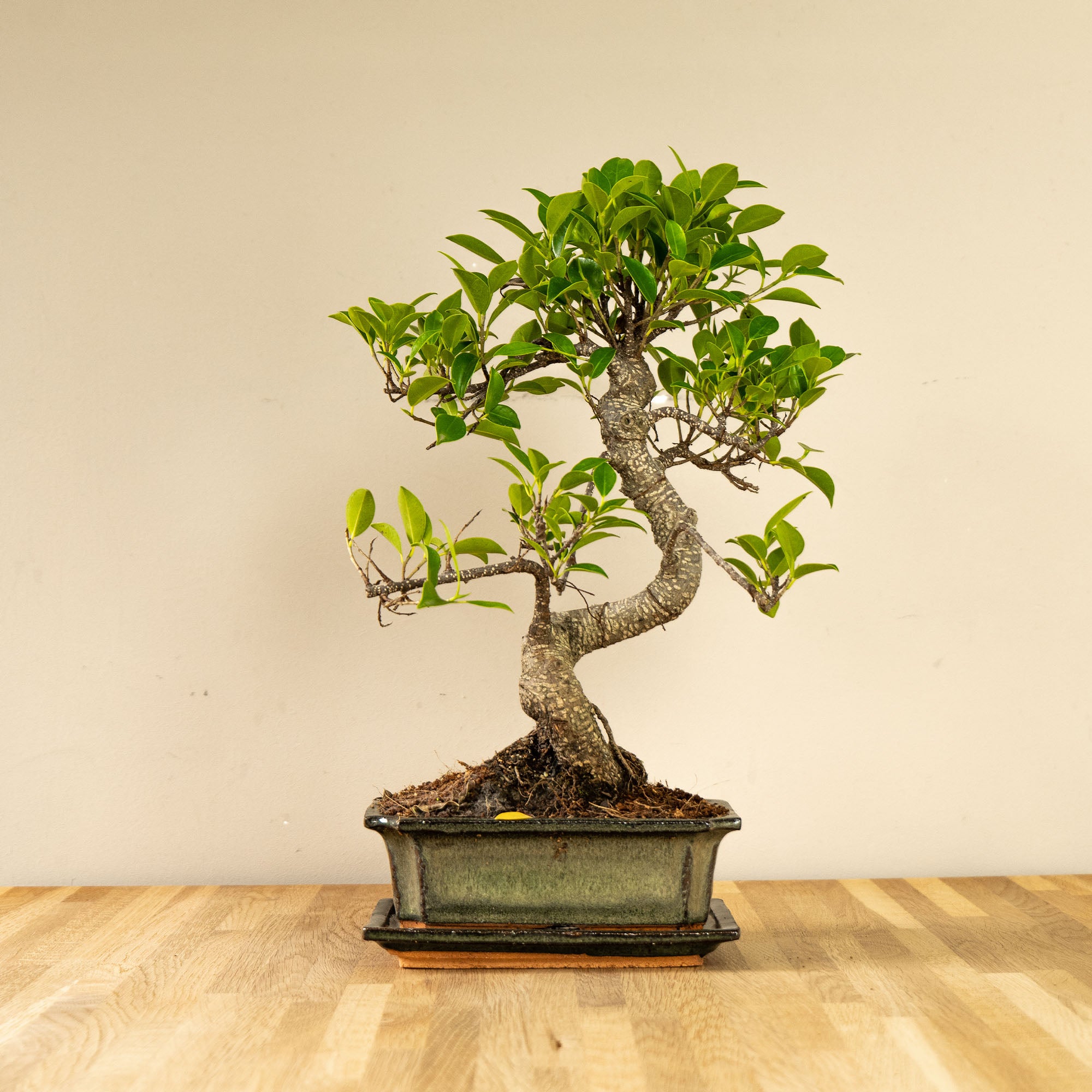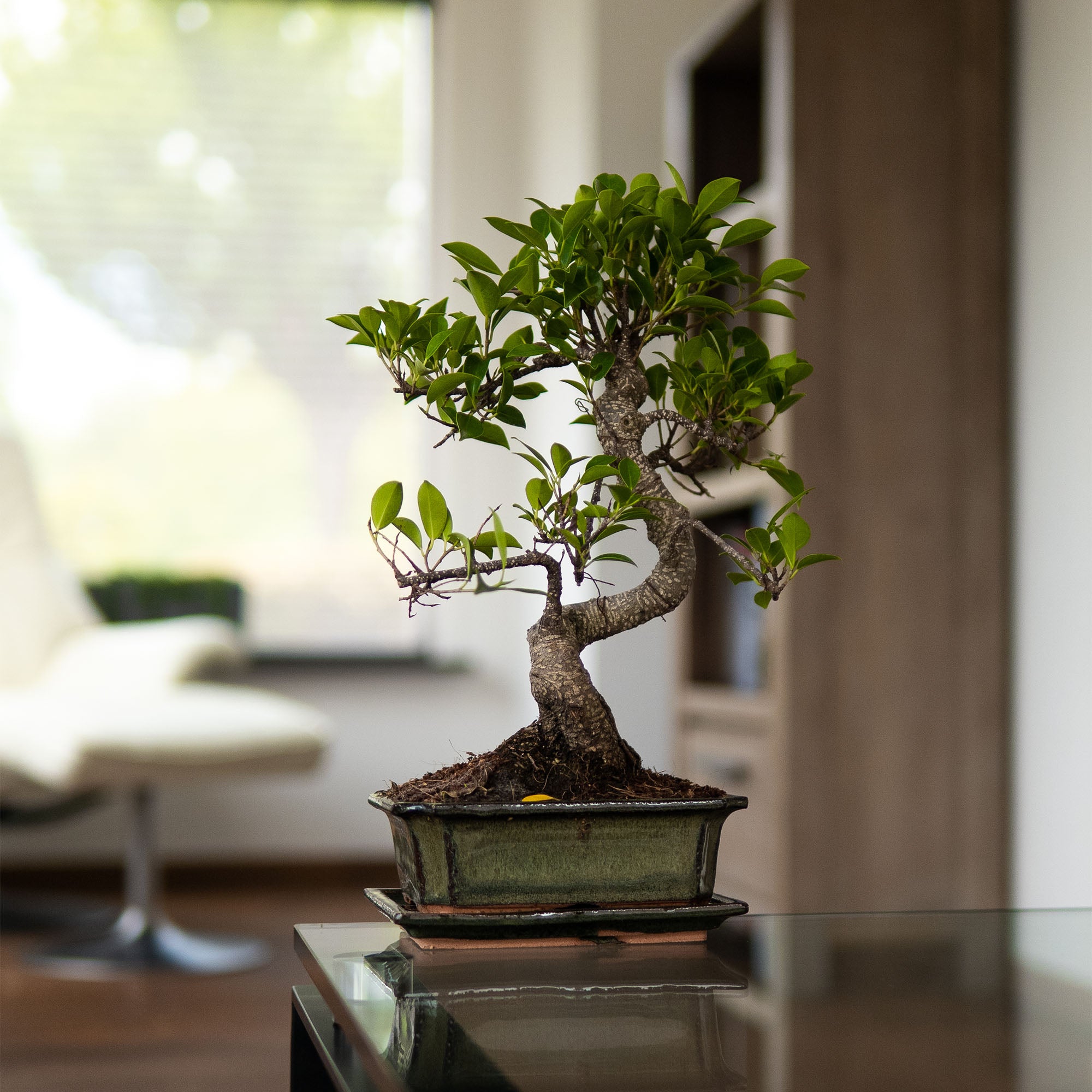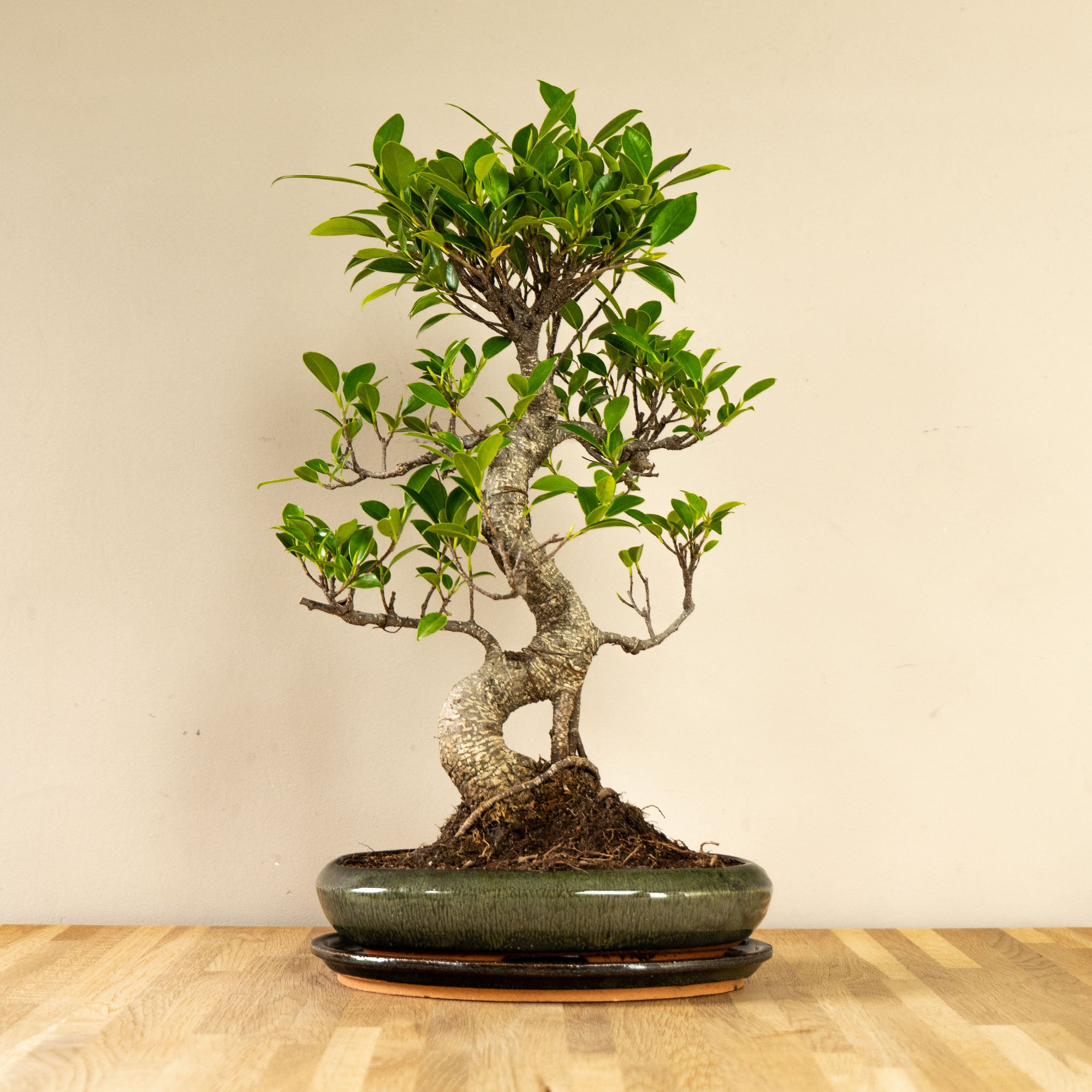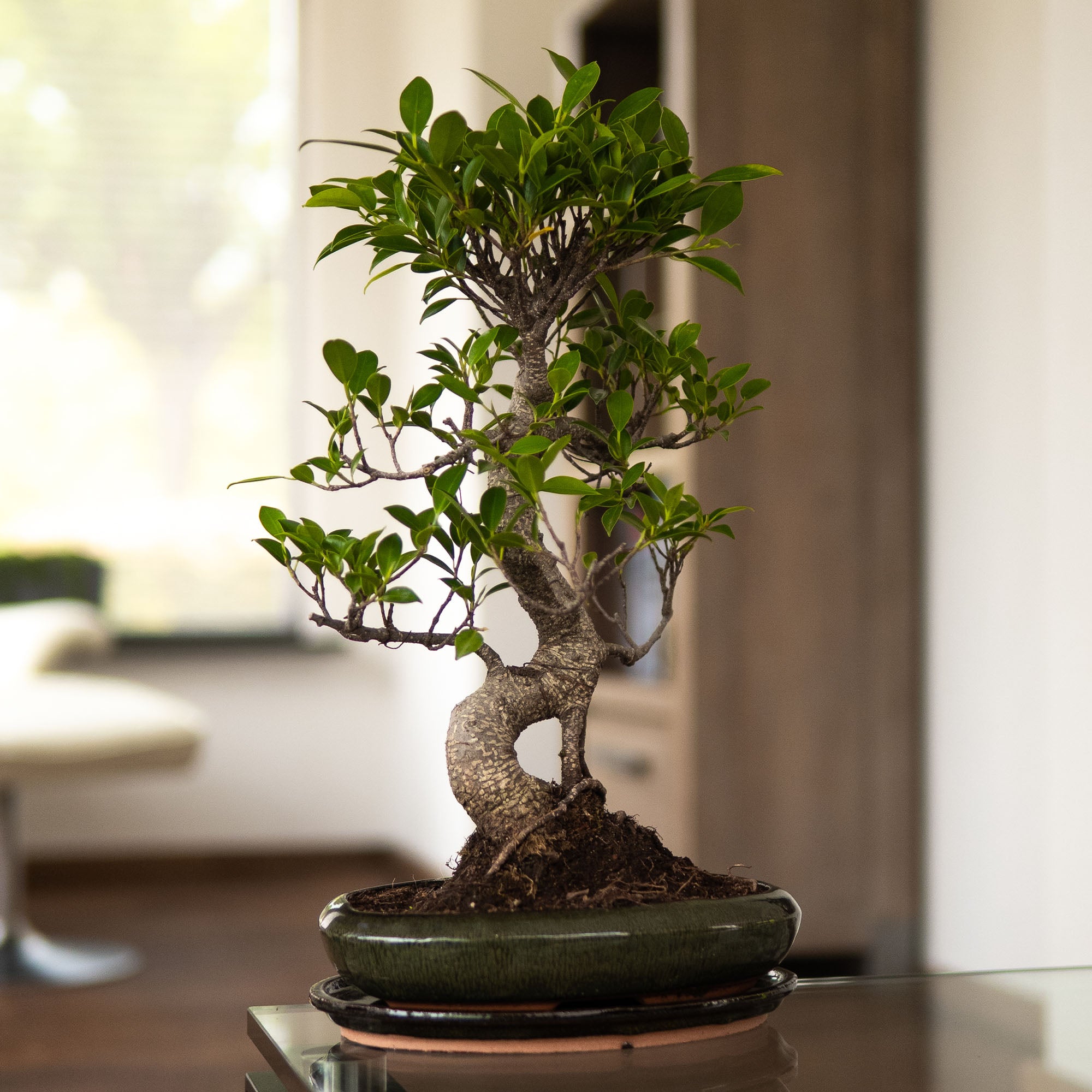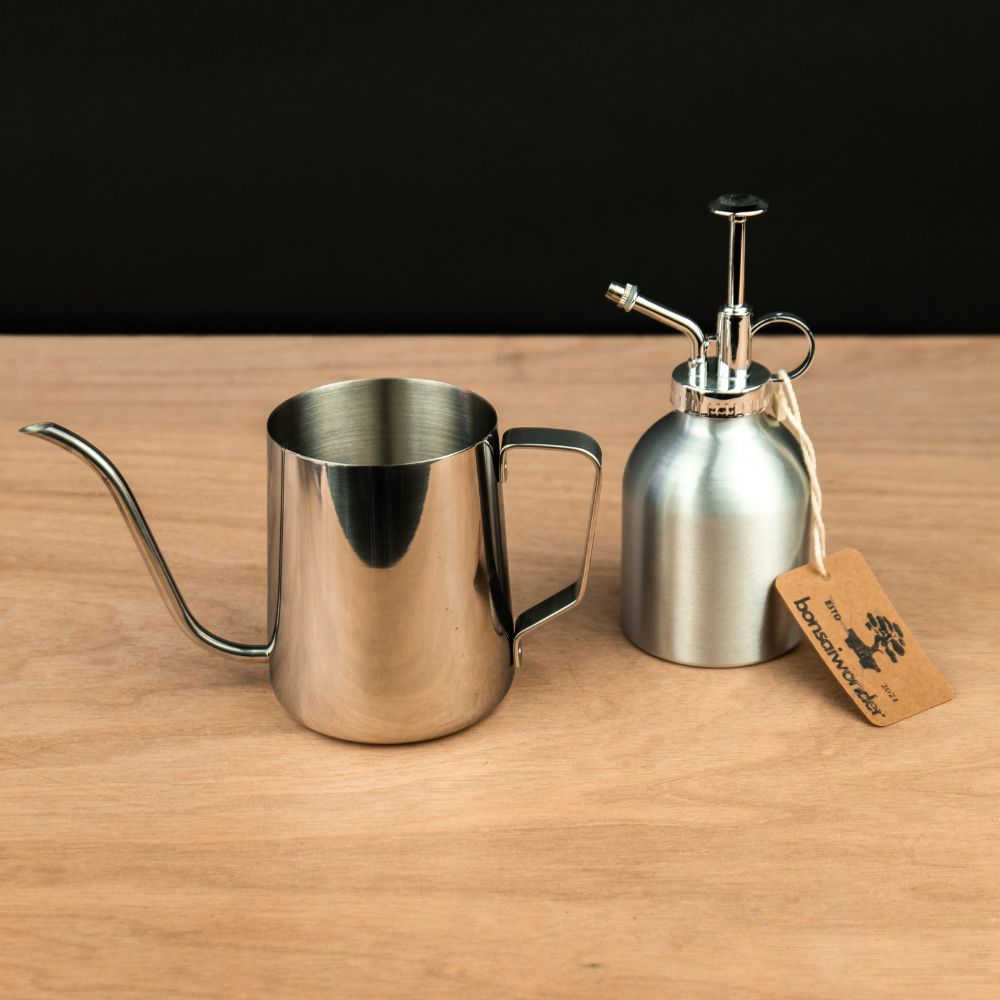Ficus Bonsai Care
A Ficus bonsai, such as the Ficus retusa and ginseng, has thick aerial roots (lianes) and glossy dark green leaves.
It often forms a sturdy trunk shape with characteristic knobs
Location
Place the Ficus indoors in a bright spot, preferably near a south-, east-, or west-facing window.
In summer it can be kept outside, as long as it does not get colder than about 15 °C at night
Keep temperature fluctuations limited; ideally between 17 – 23 °C
Water gift
Keep the soil slightly moist but not soaking wet; water as soon as the topsoil dries out slightly
Irrigate more often in summer, less in winter
Use water at room temperature (±5 °C difference is fine)
Increase humidity by spraying leaves or placing a water dish with pebbles under the pot
Power supply
During the growing season (spring to fall), feed liquid bonsai fertilizer every 2 weeks or once a month.
In winter, additional fertilization every 4 weeks at a lower dosage is sufficient
Pruning and wiring
Regularly cut back new shoots to 2 – 4 leaves once they reach 6 – 10
Shape and wire especially during the growth period; wire allows quick cutting (remove after approx. 30 days)
Use sharp pruning tools; the latex from the leaves helps wound healing, so paste is not necessary.
Repotting
Repot the bonsai every 2–3 years in spring, or annually if it is less than 10 years old.
Prune roots when repotting; use well-draining, fine bonsai soil (e.g., akadama + lava (substrate) + 20%…)
Pests and disease
Overwatering or poor ventilation can lead to mold or root rot
Common pests include spider mites, mealy bugs, or scale insects; check regularly and treat early (wax, alcohol, neem oil)
Leaves that fall off or turn yellow often indicate stress due to water quantity, light or temperature

